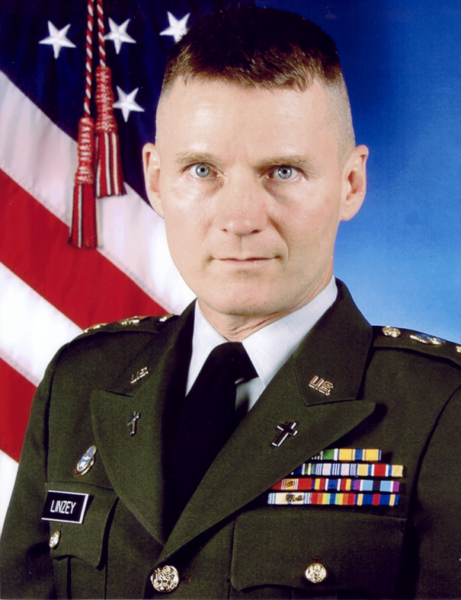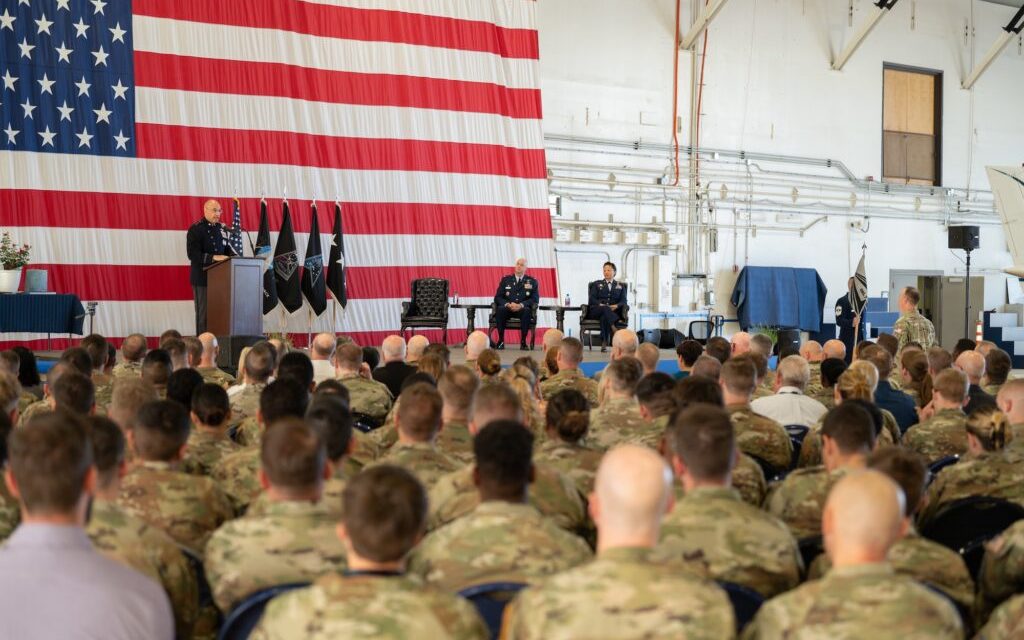FORT MEADE, S,D. – It was the fourth of a hot, dry July day nearly 150 years after the fact at Camp Sturgis, a frontier Army post in the 1870s, decommissioned in 1944. Today it’s known as Fort Meade and is used as an Army training ground.
Officer candidates from across the nation could have taken the holiday to visit the nearby patriotic Mt. Rushmore, or the not-much-further, larger-than-life Crazy Horse monument. Instead they stayed on base to play war games—Civil War-era war games.
It was a re-enactment, with fellow soldiers attached at random to Union and Confederate sides of an 1860s battlefield.

Chaplain, Col. James F Linzey, USA (Ret.)
“It was sobering,” Jim Linzey told Baptist Press. Then a chaplain with the Army National Guard, he prayed with, led a service for and watched as second lieutenants fixed bayonets and marked the approach of enemy soldiers.
“Today, we kill people we never see who could be miles away, get in our vehicles and drive or fly away,” Linzey said. These officer candidates learned that in times past, because rifles were not accurate, soldiers were told to not shoot until they saw the whites of the eyes of their enemy.
If they didn’t wait, they could waste a bullet, and while it might take a minute to reload, they could be shot.
“They saw who they shot and sometimes it was a brother, friend, or neighbor,” the chaplain said. “When each [1860s] battle was over, hundreds or thousands would cover the fields, wounded, moaning for days, until they died.
“The re-enactment was a spiritual experience,” Linzey continued. “I saw the price of freedom.”
He saw the future when in 2020 he wrote Creator of the Universe, a song of praise and prayer to God, which he calls the “Space Force hymn.”
Hymns are not commissioned by the military, to avoid the establishment of religion, Linzey explained. Military hymns become recognized in civilian churches before becoming “military hymns.” After that, they begin to be played in military chapels and by military bands.
“But they are never officially sanctioned by the military to avoid the establishment of religion,” Linzey said. “They will simply use them and call them their hymns.”
The Military Bible Association is conducting a campaign to broadcast the ‘Space Force Hymn’ on radio and television, according to an article published by christiannewswire.com. The campaign begins on July 4, 2024, and ends on November 11, 2024.
“We request all radio and television stations to join us, and churches to sing it and show the video during church services,” according to the article. “The purpose is to encourage spirituality, freedom of religion, and patriotism in the Space Force and across America.”
The stately hymn in 2-2 time is a prayer for the safety and courage of Space Force crews. It opens with, “Watch over those who fly, through the great space beyond the earth ….”
Creator of the Universe joins hymns often recognized for the other branches of the U.S. military:
The Army’s hymn: Eternal Father, Hear our Prayer.
Air Force: Lord, Guard and Guide the Men who Fly.
Navy: Eternal Father, Strong to Save. Marines: Serving for Thee.
Coast Guard: Ruler of the Land and Sea.
Most people probably are more familiar with the military’s songs, which aren’t hymns because they’re not songs of praise to God.
Air Force: Wild Blue Yonder
Army: The Army Goes Rolling Along
Coast Guard: Semper Paratus
Navy: Anchors Aweigh
Marines: Halls of Montezuma
Space Force: Semper Supra
During the 12 years Linzey was a chaplain in the Air Force, he was assigned to the Air Force Space Command, forerunner to the Space Force branch of the U.S. military created by then-President Donald Trump
Colonel Linzey today is Chief of Chaplains for the U.S. National Defense Corps, having served for 24 years in the Air Force, Army and Army Reserves.
The Space Force hymn came to him while studying Greek, Linzey said
“I was thinking about the awe and wonder of God,” the Chief of Chaplains said. “The words just flowed from my fingertips.”
Linzey now lives in Coffeyville, Kansas, where he is planting Coffeyville Worship Center, a Southern Baptist church.
His Southern Baptist roots date to previous generations. His father, Stanford E. Linzey, Jr., who eventually became a Navy Chaplain, survived the USS Yorktown, a carrier sunk by a Japanese submarine during the Battle of Midway.
James F. Linzey’s mother, Verna Linzey, was a biblical languages scholar who led in an updated translation of the original Tyndale Bible in 2001 called New Tyndale Version (NTV). She died in 2016 and her son is completing a revamp of the project with 47 scholars utilizing the most accurate texts available.
The Tyndale Bible was said to be the first biblical translation in English from the original languages that was mass-produced. The new translation of the original Tyndale Bible is set for publication in December 2025, for the 500thth anniversary of the original in 2026.
“The chaplaincy and the spiritual aspect of the Air Force Space Force involving space travel is the heart of the Space Force hymn, asking the Creator of the universe for safety on each flight,” Linzey said. “Its futuristic vision and mission parallel the New Tyndale Version, a futuristic Bible translation, because both emanate from past accomplishments and are outfitted with the future in mind.
“Without the freedom to pray for and with military personnel and provide them the Bible in a vernacular lasting far into the future, there is no freedom left,” the Chief of Chaplains continued.
“These freedoms are the basis of all others, and are the freedoms for which we live and die.”
This article was originally published to the Baptist Press. Feature image courtesy of Keefer Patterson, US Space Force.




